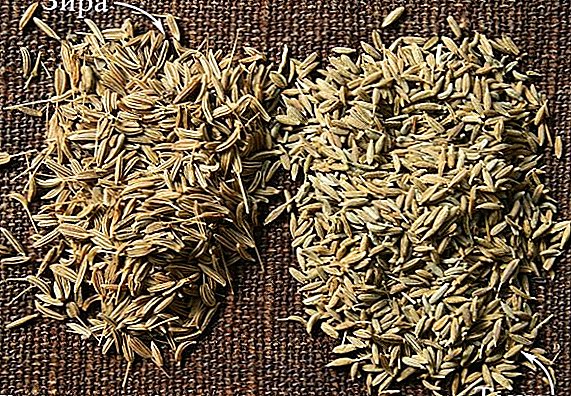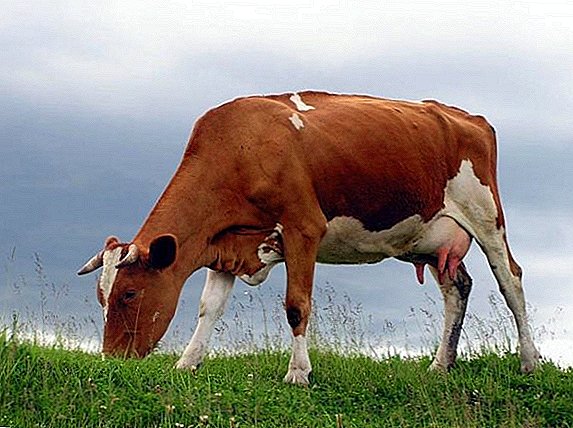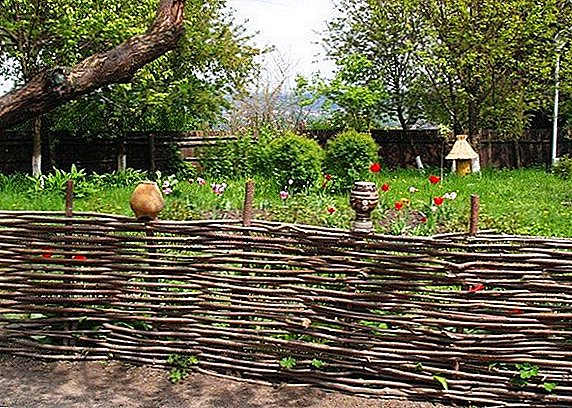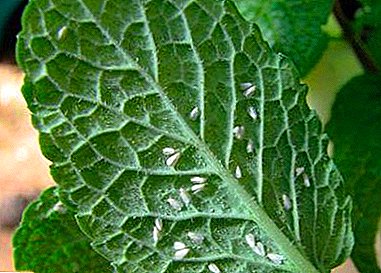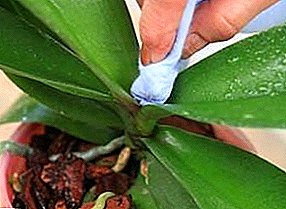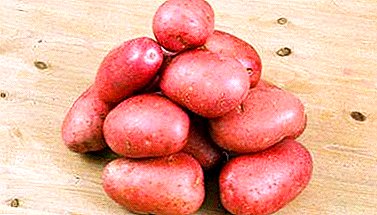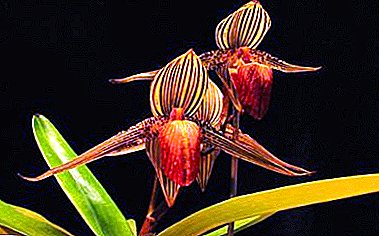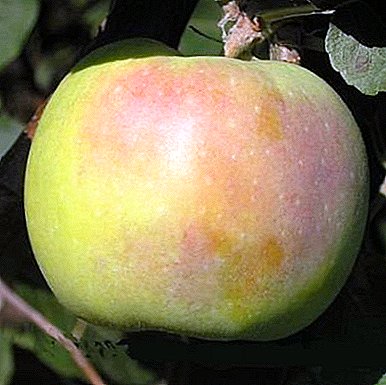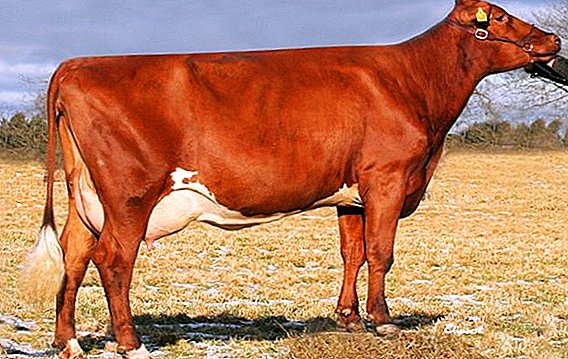 Swedish livestock is the benchmark for which many farmers are trying to equalize. Although in the northwestern part of the country the climate is rather harsh (the average temperature in winter is -17 ° C, in summer + 10 ° C) and the flora is poor, the rest of Sweden is warmer, and the flora there is much richer.
Swedish livestock is the benchmark for which many farmers are trying to equalize. Although in the northwestern part of the country the climate is rather harsh (the average temperature in winter is -17 ° C, in summer + 10 ° C) and the flora is poor, the rest of Sweden is warmer, and the flora there is much richer.
It is in these regions (central and south-eastern parts of the country) that famous Swedish breeds of cattle are bred.
Characteristics of the main breeds of cows in Sweden
All breeds of cattle, which will be discussed, are well known not only in Sweden, but also far beyond its borders. And some, such as the Herefords, were generally bred in other countries (Hereford is the name of the county in England in which this breed appeared).
But it is thanks to the Swedish breeders, livestock breeders and scientists that these animals have received worldwide recognition.
Hereford
There are 3 types of Hereford animals:
- undersized;
- medium;
- large.

The appearance of the herefords corresponds to the typical exterior of meat breeds:
- Growth: the bull grows, on average, to 135 cm at the withers, a cow - up to 125 cm.
- Weight: bulls weigh up to 900 kg (there were cases when the weight of a bull reached 1250 kg), cows - about 640-860 kg.
- Mass calves at birth: bull calves are born, having a weight of up to 35 kg, chicks - 26-32 kg.
- Breast volume: in a bull, the chest can reach 215 cm in girth, in a cow - 195 cm.
- Head: small in size, neck is strong and short.
- Torso: firmly folded, clearly stands for dewlap.
- Body: compact.
- Horns: bright, yellow-gray tint, with dark ends.
- Chest and shoulders: strong.
- Back: straight, flat, with developed sloping rear.
- Legs: strong, short.
- Udder: does not differ in the big sizes.
Did you know? The Danube bull of the Hereford breed, from the Chelyabinsk region, is the largest representative of the breed in Russia. Its weight is 1250 kg.
Slightly curly wool is thick and long, which contributes to the breeding of this breed in conditions of low winter temperatures. For these cows is characterized by a red-brown color. Sternum, belly, tip of tail - white. Sometimes a white stripe crosses the back of a cow.
In the event that one of the parents had a white head, this quality is inherited.  Productivity:
Productivity:
- Milk production. This breed belongs to the pronounced breeds of meat productivity, for this reason their milk yield is extremely small - no more than 1200 kg annually. Milk is only enough to feed the calves.
- Milk fat. This figure is close to 4%.
- Precocity. Breed belongs to late-ripening. Although work to increase the precocity was carried out, they did not give a tangible result.
- Puberty. Animals are ready to mate by about 2-2.5 years. At about 3 years old, cows bring their first offspring.
- Slaughter exit. This figure is 62-70%.
- Weight gain. Animals of this breed have one of the highest ratios of weight gain / amount of feed. With the right content, every day the bull becomes heavier by 1.5 kg, the heifer - by 1.25 kg. By age 2, a bull weighs more than 800 kg, and a calf weighs over 650 kg.
Hereford cows live, on average, up to 18 years. Due to the strong build and small size of calves, cows are easily cared for, and there is usually no need for expert intervention. Parental instinct is very developed - cows surround newborn calves with care and attention, do not allow other calves to the udder.
Important! If you want to get healthy, viable offspring from the Herefords, you should calculate the time of cow fertilization in such a way that the calving falls on the first half of March.
As the demand for fatty meat falls, and grows on lean meat, fast fattening is now practiced less and less. Farmers prefer to grow animals longer and feed them with high fiber content, which has a lower calorie content.  The breed is better than most others for getting marbled beef.
The breed is better than most others for getting marbled beef.
Herefords are well adapted to any climatic conditions, are healthy, almost do not get sick, even when kept outdoors. The main condition for maintaining good animal health is properly balanced feeding. In this case, they can tolerate frost normally to -30 ° C.
With poor nutrition, weight gain falls by 2 times, the animal does not tolerate cold. In Russia, Ukraine and Belarus, it is advisable to feed the Herefords using the combined method: in the summer on pastures, in the winter - silage, hay and mixed fodder.
Golshtinsky
Holstein are the most popular dairy breed in the world. Most of these animals have a black with a motley color, less often there are red-motley ones. Until 1971, the owners of the red-motley color were considered not to meet the standards, but after that date they were registered in a separate breed.
The dairy breeds of cows also include such as brown Latvian, red steppe, Jersey, Ayrshire, Yaroslavl.
Appearance of Holsteins:
- Growth: an adult bull grows up to 160 cm, a cow - up to 145 cm.
- Weight: the mass of an adult bull reaches 1200 kg, in some cases it can reach 1500 kg. The body weighs 700-750 kg. There have been cases when chicks fattened up to 900 kg and more.
- Mass calves at birth: The newborn bull weighs 35-43 kg, the mass of the heifer is 32-37 kg.
- Body type: the wedge-shaped body, the shoulder girdle is long and wide, the lumbar part is well developed.
- Udder: large, with distinctly distinguished veins, firmly held on the wall of the peritoneum.

Productivity:
- Precocity. Full age comes pretty early. Bull-calves, which are not suitable for further breeding, are sent for slaughter at about 1 year. By this time, their weight reaches 700-750 kg.
- Milk fat. This figure reaches 3.1-3.8%.
- Protein. In dairy products derived from Holstein, the protein content is 3-3.2%.
- Slaughter exit. This figure is low, about 55%. But this is not surprising, the main purpose of the breed is milk production. Animals gain weight quickly, and although there is not much meat in the cows, it is valued for its good taste and lack of fat.
Did you know? Half of the total milk produced in Sweden is given by Holstein cows.
Holstein people are the most productive among all representatives of dairy cattle. Specific indicators depend on the conditions of detention, region, feeding. For example, Israeli specialists have created conditions that combine all the favorable factors that make up the yield of Holsteins to 10,000 kg per year.
Animals of the bright-red color give a much smaller amount of milk - no more than 4 tons per year; while it is very fat - almost 4%.
Holstein is often used in breeding to improve other breeds. However, these animals are quite demanding. If you want your cattle to be healthy, it should provide the necessary conditions.  In order for an animal to grow and gain weight normally, one should avoid the following factors:
In order for an animal to grow and gain weight normally, one should avoid the following factors:
- unhealthy diet;
- strong temperature fluctuations;
- heavy pregnancy;
- disturbances in the process of milking.
Holstein people are highly susceptible to stress, which, in turn, leads to weight loss and even illness.
Important! The less milk yield of Holstein cows, the higher the fat and protein content in it. For example, in the USA one animal gives average up to 9000 kg of milk annually. Moreover, its fat content is 3.6%, the protein content is 3.2%. In Russia, 7,500 kg of milk per year is obtained from one such cow. The indicator of its fat content is 3.8%.
Red-motley
Work on the breeding of the red-motley breed began in the late 70s of the twentieth century. For crossing, they took the red-motley Holstein and Simmental breed of cows. Breeding work lasted more than two decades, and in 1998 the red and black breed of cattle was entered in the breeding book.
Appearance of red-and-white cows:
- Growth: This indicator in bulls reaches 140-150 cm, cows grow to 132-140 cm.
- Weight: at birth, the bull weighs 36-39 kg, at 1.5 years old - 435-445 kg, the mature bull has a weight of 920-1000 kg. The weight of the cow during the first lactation is 505 kg.
- Body type: strong build, developed sternum.
- Suit: red and black.
- Udder: rounded, massive.

Productivity:
- Milk production. Cows give at least 5000 kg of milk annually. The average productivity is 6,600-7,000 kg per year. There are cows with productivity in the region of 10,000 kg or more.
- Fat Milk has a high fat content, an average of 3.8%. Over the entire breeding history in the breed, 16 individuals were officially registered, having a productivity of more than 8,400 kg of milk with a fat content of 4.26%. Also, 10 cows that gave more than 9,250 kg per year with a fat content of 4.01%, 5 cows that gave more than 10,280 kg of milk (4.09% fat) during the year, and 4 female cows with a milk yield over 12,000 kg (4.0 %).
- Protein. Characteristic indicators - 3.2-3.4%.
Breeding work to improve the breed is carried out to this day. Their main focus is increasing milk productivity.
Also, breeders are trying to improve the adaptability of the animal to the conditions of severe winters.
This variety of cattle is rather undemanding in its content.  However, in order for the animal to bring maximum benefit without harming its own health, it is necessary to follow some simple recommendations:
However, in order for the animal to bring maximum benefit without harming its own health, it is necessary to follow some simple recommendations:
- Develop and strictly follow the feeding and milking schedule. Deviation from the established schedule should not exceed 13 minutes, otherwise it may adversely affect the gastrointestinal tract and productivity.
- Every day you need to clean the stall, barn, or a place where the animal is under a canopy.
- Availability of fresh water in the required quantities.
- In winter, the barn should be well insulated, drafts are strictly unacceptable. In the summer, overheating should be avoided.
- Free grazing in the warm season. During this period, it is necessary to feed the animal, for the most part, with succulent herbs.
- In the rest of the year, the feed must be balanced and include everything necessary for the cow (quality hay, silage, haylage, legumes and mixed fodder). To fill the need for protein, oatmeal and pea straw should be introduced into the diet.
- Feed give depending on how many times a day milking is carried out. In the event that the cow is milked twice a day, concentrate is given to the animal immediately before the procedure.
Simmental
Simmental cows are very popular in Sweden, especially in the central part of the country.
Important! Simmentals are highly fertile. If you decide to breed cattle, this breed is the best for this purpose.
There are dairy and meat and dairy varieties of Simmental breed. The meat line is quite well adapted to the conditions of the north. Meat and dairy direction needs succulent feed. For this reason, cows that are kept in the northern and western parts of the country are not very productive.
In these regions, the meat line has become more widespread. But dairy animals, which are bred in the center of the country, as well as in the eastern and southern parts, are capable of producing up to 10,000 kg of milk per lactation.  Appearance of simmentals:
Appearance of simmentals:
- Growth. Animals are not very tall: bulls grow up to 147 cm, cows - up to 135 cm.
- Weight. The cow weighs 560-880 kg. An adult bull has a mass of 840-1280 kg. The mass of animals depends on the specific purpose of this species: meat more dairy.
- Mass calves at birth. Gobies are born, having a mass of about 44 kg, chicks weigh up to 37 kg.
- Body type: cows have a straight back, oblong body shape with rounded sides. The bulls have a hump just below the head.
- Head: small.
- Neck: short
- Extremities: short and strong, thanks to them, the Simmentals can travel many kilometers in search of rich grass.
- Suit: cows are pale colorful; bulls have a cream shade. The inside of the legs, belly and head are white.
- Udder: small.
Productivity:
- Meat productivity. They have high meat productivity (up to 65% in bulls, up to 57% in chicks). In the meat felt pronounced fibers, although they can not be called coarse. The fat content of meat is about 12%.
- Milk productivity. Productivity of the milk line is also quite high - 4500-5700 kg per lactation. Cases when simmentals gave more than 12000 kg for a lactation are registered. Meat line meat sticks are capable of producing up to 2500 kg of milk per lactation, which is only enough to feed calves. There are cases when simmentals give birth to 2 calves.
- Fat The milk of these cows has a high fat content - about 4.1%.
- Puberty. Cows are ready to mate in 8 months, bulls can become producers in 18 months. Usually the first calving falls on the age of 24-30 months. The second calving - 13 months after the first.
- Precocity. The age of bulls comes about 5 years.
- Weight gain. Animals gain weight well. In six months, the calf weighs 185-225 kg. In 1 year, calves weigh already 225-355 kg. If the animals feed properly, their weight increases daily by 0.8-1.0 kg. At the age of one year, rejected cows and bulls go for slaughter.
 Simmentals became the basis for breeding new breeds in various countries with developed animal husbandry. For example, in the USA black representatives of the breed were bred, and in the USSR local “Russian simmentals” made up 25% of the country's total population.
Simmentals became the basis for breeding new breeds in various countries with developed animal husbandry. For example, in the USA black representatives of the breed were bred, and in the USSR local “Russian simmentals” made up 25% of the country's total population.Important! Mastitis is a disease that is more common with other diseases in Simmentals.
When breeding Simmentals need to remember about some of the features of their content:
- Simmentals need to be well fed. Only in the presence of a rich balanced diet will the cow gain weight steadily.
- These animals are contraindicated permanent stay in the stall. They need a walk even in winter if there is not much snow.
- To feed Simmentals you need high-quality hay, haylage, a great option - boiled corn. In addition, the animal needs succulent feed, 2-3 kg of feed every day, roots, cake and plenty of fresh water.
Features breeding cows in Sweden
Sweden’s success in livestock production in general, and cattle breeding in particular, was preceded by a serious preparation and development of technological, legislative and economic measures, thanks to which we managed to bring livestock production to a very high level. A great work was carried out and continue to be done by scientists-breeders.  As a result, it is possible to briefly describe the current state of cattle breeding in this country as follows:
As a result, it is possible to briefly describe the current state of cattle breeding in this country as follows:
- Cattle that are bred in Sweden has the most stable immune system;
- cows are characterized by a calm, balanced temperament and stable psyche, due to the excellent conditions of detention;
- animals have excellent performance indicators, both meat and dairy.
Despite the fact that Sweden is a northern country that does not possess large territories, and the north-western part of the state is a tundra in general, the breeding of cattle in it is at the highest level.
The experience of the Swedes shows that with the right approach, combining the achievements of modern science and hard work, you can solve problems that at first glance seem to be impossible.


